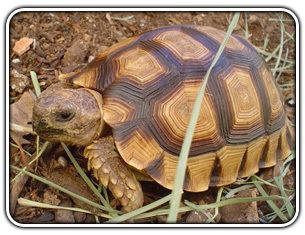Subclass Anapsida Rank Species | Phylum Chordata Order Testudines Family Testudinidae Higher classification Chelonoidis | |
Similar Turtle, Tortoise, Chelonoidis, Reptile, Yellow‑footed tortoise | ||
Chaco tortoise nesting
The Chaco tortoise (Chelonoidis chilensis), also known as the Argentine tortoise or southern wood tortoise, is a tortoise from the family Testudinidae.
Contents
- Chaco tortoise nesting
- Hypo chaco tortoise geochelone chilensis
- Distribution
- Taxonomy
- Description
- Diet
- Species status
- References
Hypo chaco tortoise geochelone chilensis
Distribution
The common Chaco tortoise, is mainly found in Argentina, but also in Bolivia and Paraguay, mainly within the Chaco and Monte ecoregions. Its distribution is mainly limited by temperature-related variables, and precipitation in the reproductive period.
Taxonomy

The scientific name for this species, Chelonoidis chilensis, is misleading because it is not native to Chile. It occurs mainly in Argentina, Bolivia and neighboring Paraguay. When the species was first described by Gray in 1870, he mistakenly thought that Mendoza was in Chile instead of Argentina, thus the misnomer. Sclater corrected his mistake in the same year. However, the rules of nomenclature gave precedence to the name chilensis, even though it was based on an erroneous assumption, and the name persisted.
Description
The carapace can measure up to 43.3 cm (but usually less than 25 cm) and may be either totally yellowish brown or have dark-brown to black rings surrounding a tan center on each scute. Specimens found further south tend to be much larger than those found in further north populations. The rim of the shell is slightly serrated and has a dark wedge of pigment at the back edge of each scute. The plastron may be uniformly yellowish-brown or have a dark triangular wedge along the seams of each scute. The head, limbs and tail are greyish to yellowish-brown, with the front of each forelimb covered with large, angular scales and each thigh featuring several enlarged tubercles.
Diet
Like all tortoise species, the chaco tortoise is primarily herbivorous, consuming grasses, shrubs, fruits, and cactus pads.
Species status

There is only one recognized species. However, some researchers believe C. chilensis should be divided into three species: C. chilensis, C. petersi, and C. donosobarrosi. Some support C. donosobarrosi as a subspecies (C. c. donosobarrosi). There is research to indicate that it may qualify as a separate species, while C. petersi may just be a variant of C. chilensis, the variances being clinal variations in adjacent populations. However, these taxa mentioned have all been formally synonymised and accepted. The morphological variation is explainable as a factor of elevation. Historically, these have been viewed as separate taxa, with little work done to confirm or deny it. Subsequent molecular analysis has found little to no genetic variation.
